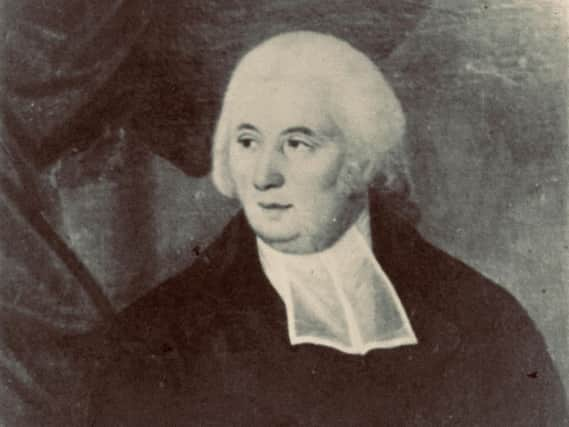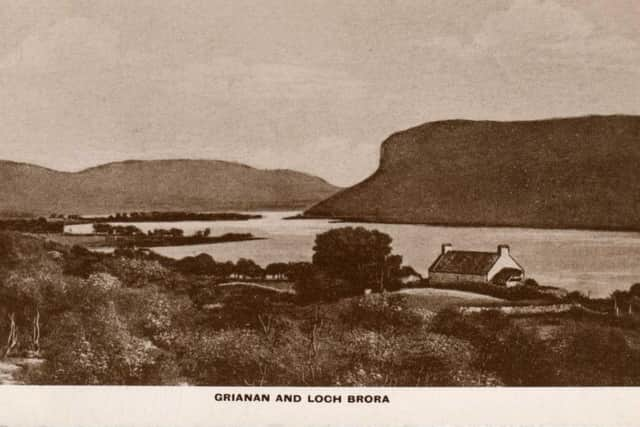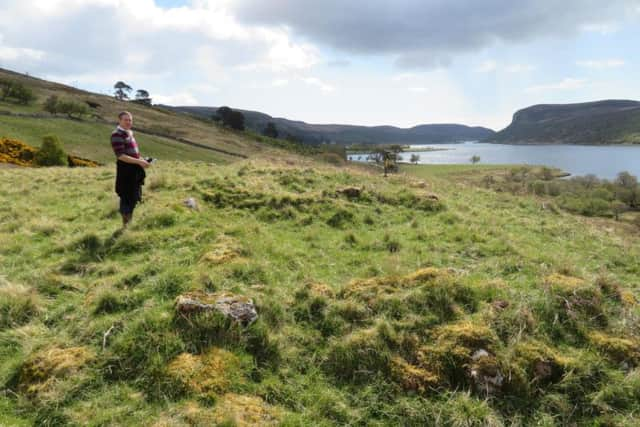Secrets of the 'Bad Minister' of the Highlands to be revealed


Reverend Walter Ross was the minister of the parish of Clyne, Sutherland, in the mid 18th Century with his poor reputation still following him round more than 200 years later.
Employed by the Sutherland Estates, the minister was a deeply divisive figure within his community and now archaeologists are hoping to reveal a fuller picture of his life by excavating the remains of his former home, Greenan, near Brora.


Advertisement
Hide AdAdvertisement
Hide AdDr Nick Lindsay, of Clyne Heritage Society, said: "There is so much documentary evidence about the Rev Ross that we really want to know what else we can find out about him."
All that remains of Greenan, which overlooks Loch Brora, are the footings of the house but it is hoped the once-prominent property in "the most beautiful location" will shed fresh light on the minister and his life.
After graduating from Marischal College in Aberdeen in 1771, Rev Ross was headhunted by the factor of the Sutherland Estates to tutor the 11-year-old Countess of Sutherland.


His appointment was not a popular one from the outset, with parishioners favouring a Mr Graham, a native of Lairg, who was known to be a godly man.
Quickly, the impact of the "Bad Minister" on the community was clear.
A letter written by Captain James Sutherland, factor to the 17th Earl of Sutherland, to a friend in Edinburgh in 1777, details the day that locals, most women, angrily confronted the minister.
"A most daring mob which appeared at the Kirk of Clyne on Sunday last, chiefly composed of women with the intention of murdering Mr Walter Ross. Very fortunate I got there in time to prevent mischief…."
Another contemporary statement read that “he probably would have been murdered, had he not been protected and rescued by the gentlemen, as even the elders instigated and countenanced it.”
Advertisement
Hide AdAdvertisement
Hide AdDr Lindsay said it appeared the minister was more interested in farming fox hunting, grouse shooting and socialising than spreading the word of God.
He was also renowned for plagiarising sermons. Rev Donald Sage, minister of neighbouring Kildonan Parish, wrote in his autobiography that Rev Ross had ‘no moral weight, for not only was his conversation light, worldly and profane, but it was characterised by exaggeration and absolute untruthfulness."
On one occasion, Rev Ross helped his friend, a merchant called Hugh Houston, to outwit the exciseman after taking delivery of illicit gin and brandy.
According to research by Clyne Historical Society, Rev Ross arranged for "all reliable men with horse and carts" in to transport the contraband from Houston's store to the church at Clynekirkton after dark, where it was stashed under the east gallery.
The revenue men found nothing at Houston's store the next day.
"I would like to think that the men and the minister were suitably rewarded for their defiant, if not very godly efforts," Dr Lindsay said.
During the summer, Rev Ross took his black cattle to pasture at Grianan, where he held services in a tent for those living in the hillier parts of the parish
Dr Lindsay said the minister was "a staunch supporter of the Sutherland Estate’s improvement policies, which included the notorious and sometimes brutal Clearances".
Advertisement
Hide AdAdvertisement
Hide AdHe was involved in the trial of factor Patrick Sellar for ‘culpable homicide, fire-raising and cruelty’ in Inverness in 1814 and sat beside Sellar in the defendant's box for the entire duration of the 15-hour long trial.
Sellar was found not guilty by the jury of land-owners, farmers and merchants with the clearance of tenants from the estate to continue for a further seven years.
Sellar's replacement, Francis Suther, arranged to meet with a number of Strath Brora tenants who were facing eviction at new lots being provided for them on the coast at Brora.
Suther waited several hours in the rain but the tenants did not show. Ross was given the name of those who did not attend, with the parishioners to be reprimanded in church the following Sunday.
Rev Ross, who married and had a son, died in May 1825 aged about 74. He left £985 sterling - around £100,000 in today's terms.
Dr Lindsay said: "It's a pretty tidy sum for a man of the cloth. Amongst his creditors, James Harper, the owner of Clynelish Distillery had the largest credit, indicating that Ross either lived the good life or was a genial host, or both.
On his death, an inventory of his house included 17 chairs and carpets, a rare item for the day
"Reverend Ross had certainly acquired the luxuries of 19th Century life," Dr Lindsay said.
Advertisement
Hide AdAdvertisement
Hide AdGreenan was later occupied by John Mathieson, who married his third wife, Miss Isabella Baillie at the age of 79. At the time of their wedding, the bride was 27-years-old.
Dr Lindsay is due to run the Istanbul Marathon next month to raise money for the excavation of Greenan and subsequent cataloguing.
